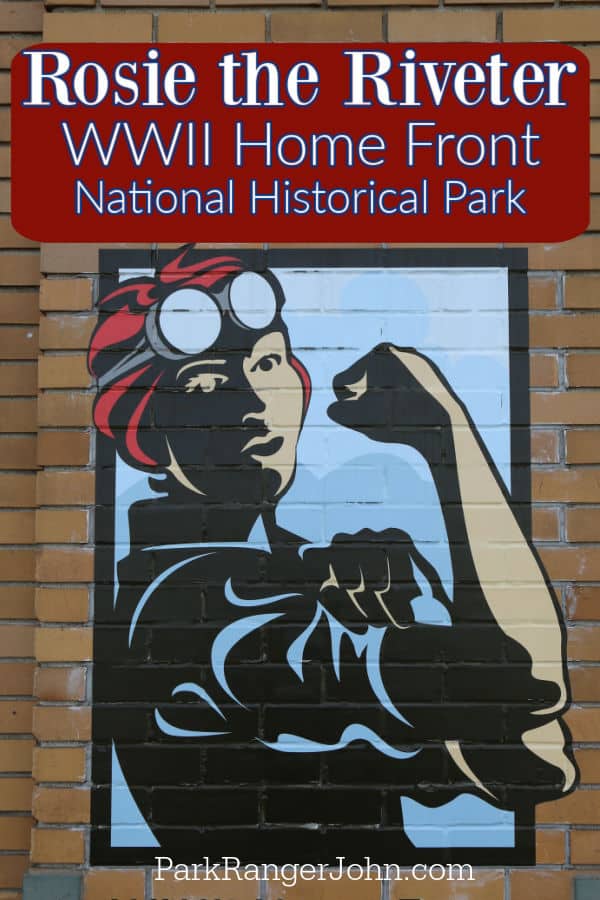A Comprehensive Guide to Rosie the Riveter WWII Home Front National Historical Park in California
Rosie the Riveter WWII Home Front National Historical Park is a fascinating destination that offers a deep dive into the history of American civilians during World War II. This park serves as a tribute to the sacrifices and contributions made by everyday Americans who supported the war effort from the home front.
The park provides educational exhibits and interactive displays that help visitors understand the role of local residents in addressing labor shortages during the war. Highlights include the Ford Assembly Plant, defense industries, the wartime boomtown of Richmond, California, and the work done at the Richmond Kaiser Shipyards.
Visiting the Rosie the Riveter WWII Home Front National Historical Park is highly recommended, especially for those interested in learning about the impact of women and African Americans during this pivotal time in American history. The park features some of the best interpretive displays found in any National Park, making it an excellent educational experience for all ages.
History of the Park
Located in Richmond, California, near San Francisco, the park honors the efforts of Americans who kept the home front running during World War II. It specifically commemorates the contributions of women and African Americans who worked tirelessly during the war. The park was established in 2000 as a partnership park, meaning the National Park Service does not own the land or buildings but works collaboratively with local entities to preserve and share the history.
The Visitor Center is housed in the Historic Ford Building Complex in Richmond, providing valuable information about the experiences of the city and the country during the war. One of the most iconic images associated with the park is the “We Can Do It” poster created by J. Howard Miller in 1942. Although it was not directly linked to a woman named “Rosie,” it became a symbol of empowerment for women working on the home front.
Norman Rockwell later created his own version of the image, featuring a muscular woman in jean bibs eating lunch with a rivet gun across her lap. His model was a 19-year-old telephone operator, not a riveter, but the image became widely popular and served as a powerful representation of the workforce during the war.
Richmond’s Role in the War Effort
Richmond played a significant role in the war effort, with its shipyards producing more ships than any other in America. The city was also home to 56 war industries, attracting tens of thousands of people to work and support the wartime industries. The population of Richmond grew dramatically between 1940 and 1943, increasing from 23,000 to 93,000.
At its peak, the Richmond shipyards employed nearly 90,000 people, offering new opportunities for African Americans and Chinese-Americans to secure higher-paying jobs. However, many Japanese-Americans were forcibly relocated to camps during the war, highlighting the challenges faced by various communities.
The city expanded its public services to accommodate the growing population, including schools, housing, and other necessities. Henry J. Kaiser, a key figure in the war effort, initiated health care services for workers, ensuring that 92% of shipyard employees had access to healthcare by 1944.
Things to Know Before Your Visit
- Entrance Fee: There is no entrance fee to visit the park.
- Free Entrance Days: The National Park Service offers five free entrance days annually.
- Park Hours: The park is open daily from 10 AM to 5 PM, except on Thanksgiving, Christmas Day, and New Year’s Day.
- Wi-Fi: There is no public WiFi available.
- Insect Repellent: It is advisable to bring insect repellent, especially if you are near water.
- Water Bottle: Bring your own water bottle, as plastic bottles are not sold in the park.
- Parking: Free parking is available in the complex parking lot.
- Food/Restaurants: There are no restaurants within the park.
- Drones: Drones are not permitted within National Park Sites.
- National Park Passport Stamps: Available in the visitor center.
Best Time to Visit
The best time to visit the park is during warm and sunny weather, allowing for full enjoyment of outdoor exhibits. While the park is open year-round, summer and fall tend to be the most popular seasons due to pleasant weather conditions.
Things to Do
- Visitor Center: Explore the heart of the park and experience what it’s like to use a riveting gun.
- Junior Ranger Program: Pick up a program at the visitor center and earn your junior ranger badge.
- Rosie Fridays: Visit with real Home Front workers from WWII on most Fridays.
- SS Red Oak Victory Ship: Open Tuesday-Thursday-Saturday-Sunday, with admission fees listed online.
- Guided Ranger Tours: Enjoy ranger-led programs that highlight life during World War II.
Where to Stay
There are no National Park Lodges within the park, but several options are available in nearby cities such as Richmond, Berkeley, and Emeryville. These include hotels like Residence Inn by Marriott, HYATT house, Claremont Club & Spa, DoubleTree by Hilton Hotel, and Holiday Inn Express Hotel & Suites.
Camping
There are no National Park Campgrounds within the park, but campervans can be rented for a fun adventure. Escape Campervans offers fully equipped vehicles with built-in beds, kitchen areas, and more.
Nearby Parks
Other nearby parks include the San Francisco Maritime National Historical Park, Alcatraz Island, Golden Gate National Recreation Area, Muir Woods National Monument, and Point Reyes National Seashore. Visitors can explore these sites as part of their journey through the Bay Area.



